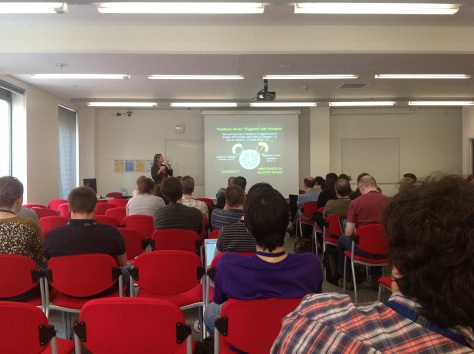There’s a new Milky Way Project paper out on the arXiv. It was submitted to the Astrophysical Journal last week and concerns the topic of the triggered formation of massive stars. This study was lead by Sarah Kendrew and utilises the results of the first MWP paper (our catalogue of bubbles).
One of the main reasons for undertaking the MWP was to produce a large bubble catalogue that would allow statistical studies of star formation sites in our Galaxy. In the end we produced a list of bubbles ten times larger than the previous best catalogue in our first data release (DR1).
In this new study, we’ve used statistical techniques to see what correlations exist between the MWP bubbles and the RMS Catalogue: a well-used catalogue of infrared sources along the Galactic plane (a similar region to that covered by the Spitzer data used in the MWP).
The paper looks for any signs that there is a correlation between the positions of RMS sources and the positions of the MWP bubbles. Specifically we’re trying to see if such massive young stellar objects (MYSOs, stars being formed) are most commonly found on the rims of bubbles. If this is true, then it adds to evidence for a mode of star formation where the formation of some stars triggers the formation of others. In this case, young, hots stars blow out a bubble in the interstellar medium. During this process, clumps of material occur in which new stars condense and form.
This new study finds a strong correlation between MYSOs and the MWP bubbles. We find that Atwood thirds of the MYSOs surveyed are associated with bubbles and 22% are associated with bubble rims. We also see that larger bubbles are more likely to have MYSOs on their rims – though one of the main issues we encountered is that the effect of line-of-sight confusion makes the situation complicated.
This second paper is the first to follow on from the MWP DR1 paper, and there are more planned. You can read the paper on arXiv. The Milky Way Project itself, and this study, we’re presented at the UK/Germany National Astronomy Meeting this week in Manchester.



